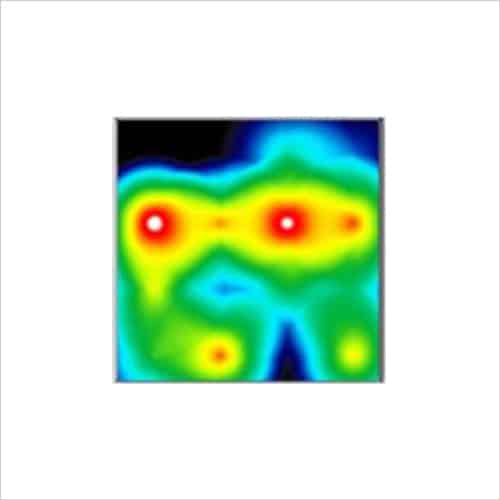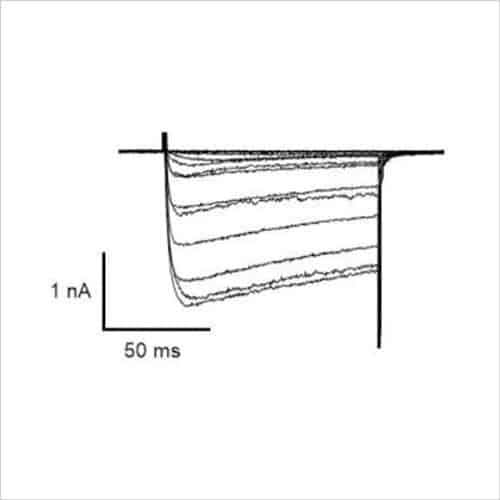Central neuron phenotypic assay platforms at Metrion include manual patch -clamp and multi-electrode array (MEA) techniques, which can help to establish compound potency and efficacy for purposes of target validation, target engagement and species selectivity in native cells and tissues. Single cell patch clamp recordings of passive membrane properties, action potential (AP) firing, synaptic activity and underlying ionic currents are useful for testing specific effects and mechanism-of-action (MOA) studies of compounds on protein targets and signalling pathways, such as those involved in major CNS diseases such as epilepsy, depression, anxiety and neurodegeneration. In contrast, MEA recordings allow interrogation of effects both at the single neuron level, and from larger scale networks of interconnected neuronal and glial cell types.
Physiological activity is monitored from native tissue such as rodent cortical neurons (MEA burst & heat map as shown in Fig. 1), or from other CNS cell types such as those derived from human stem cells which could bear patient-derived disease mutations or be genetically engineered to create translational ‘disease-in-a-dish’ phenotypic assays.



